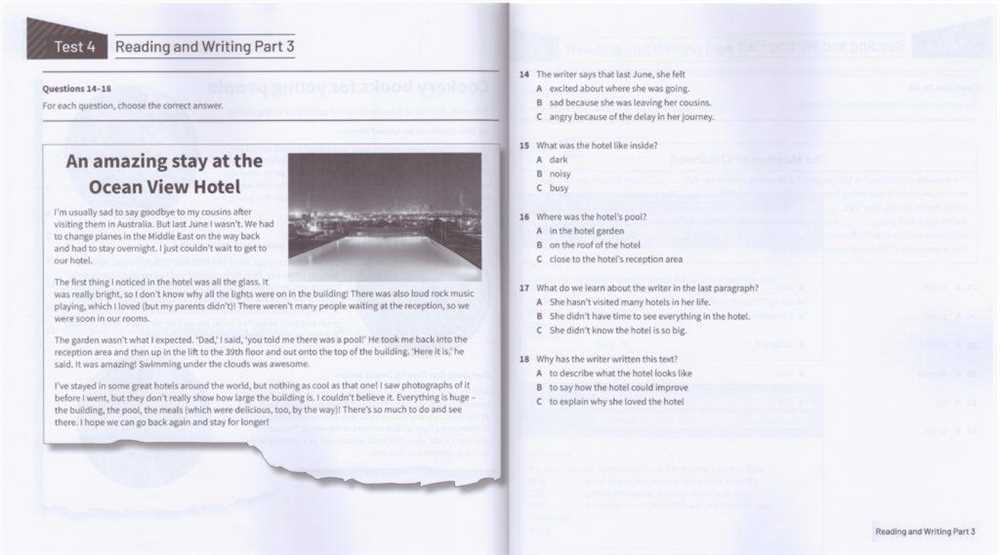
In “The Story of an Hour,” a short story written by Kate Chopin, the author explores the theme of freedom and the constraints of marriage in the late 19th century. The story follows Louise Mallard, a woman who learns of her husband’s death and experiences a whirlwind of emotions in just one hour. Chopin’s skillful storytelling leaves readers with several key interpretation questions that can shed light on the deeper meaning of the story.
One of the interpretation questions in “The Story of an Hour” revolves around the possibility of Louise Mallard feeling relieved rather than devastated by the news of her husband’s death. Throughout the story, Louise’s mixed emotions are evident, and some readers may wonder if her reaction implies a sense of liberation from the oppressive nature of her marriage. This interpretation invites readers to consider the societal expectations and limitations imposed on women during that time period.
Another interpretation question that arises from the story is the significance of the “open window” as a symbol of escape. Louise Mallard gazes out of her window, observing the world beyond, and it prompts her to indulge in thoughts of a life free from her husband’s control. This imagery suggests that the open window represents the possibility of a new beginning and a chance for Louise to break free from her confined existence.
The final interpretation question centers around the unexpected twist at the end of the story. As Louise Mallard embraces her newfound freedom and cherishes the thought of a life without her husband, he suddenly appears alive and well. The shock of his return ultimately leads to her tragic death. This twist raises the question of whether Louise’s heart attack was caused by sheer joy and subsequent disappointment, or if it was a result of the realization that her freedom and independence would once again be taken away.
The Story of an Hour: Reading Interpretation Questions Answer Key

Below you will find the answer key to the reading interpretation questions for “The Story of an Hour” by Kate Chopin. These questions will help guide your understanding of the story and the themes explored within it.
Question 1:

What is the main theme of “The Story of an Hour”?
Answer: The main theme of “The Story of an Hour” is the repression of women in marriage and the longing for freedom.
Question 2:
How does the protagonist, Mrs. Mallard, react to the news of her husband’s death?
Answer: Mrs. Mallard initially reacts with shock and grief, but then experiences a sudden surge of liberation and joy.
Question 3:
What does Mrs. Mallard realize during her time alone in her room?
Answer: Mrs. Mallard realizes that she is relieved and ecstatic about the prospect of living her life without the constraints of her marriage.
Question 4:
How does Mrs. Mallard’s reaction to her husband’s death reflect the societal expectations and norms of the time?
Answer: Mrs. Mallard’s initial grief and subsequent joy exemplify how women were expected to mourn the loss of their husbands, but also how they were often constrained by societal norms and expectations.
Question 5:
What is the significance of the title “The Story of an Hour”?
Answer: The title refers to the brief moment in which Mrs. Mallard experiences true freedom and liberation before her life takes a tragic turn.
These answers should help deepen your understanding of “The Story of an Hour” and its exploration of themes like women’s repression and the longing for freedom. Remember, interpretation is subjective, so feel free to form your own insights and opinions as well.
Who is the author of “The Story of an Hour”?
The author of “The Story of an Hour” is Kate Chopin, an American writer born in 1850. She is known for her exploration of female independence and sexuality in her works, which often challenged the societal norms of the time. Chopin’s writing style is characterized by her use of vivid imagery and psychological depth, allowing readers to delve into the innermost thoughts and emotions of her characters.
In “The Story of an Hour,” Chopin tells the story of Louise Mallard, a woman who receives news of her husband’s death and experiences conflicting emotions of grief, freedom, and a newfound sense of self. Through her concise and powerful prose, Chopin delves into themes of female agency and the constraints of marriage, ultimately challenging the notion of societal expectations placed upon women.
What is the main theme of the story?
In the story “The Story of an Hour” by Kate Chopin, the main theme revolves around the concept of freedom and liberation. The story explores the intense emotions and thoughts of Mrs. Mallard, the protagonist, as she learns about her husband’s death. It delves into her brief journey of self-discovery and the realization that she is now free from the confines of a marriage that had been suffocating her.
The theme of freedom is depicted through Mrs. Mallard’s overwhelming sense of relief and joy upon hearing the news of her husband’s death. It is important to note that the story is set in a time when women had limited rights and were expected to conform to societal expectations. Mrs. Mallard’s sudden realization that she can now live for herself and embrace her own desires and aspirations symbolizes the desire for freedom that many women of that era longed for.
The theme of liberation is further emphasized through Mrs. Mallard’s internal conflict as she grapples with conflicting emotions of guilt and happiness. The story showcases the complexities of human emotions and the internal struggle that arises when one discovers newfound freedom. Mrs. Mallard’s ultimate death, caused by the shock of seeing her husband alive and well, can be seen as a tragic consequence of the conflict between her desire for freedom and the oppressive societal norms of the time.
Overall, the main theme of “The Story of an Hour” centers around the notions of freedom and liberation, exploring the emotional and mental journey of a woman who briefly experiences a taste of independence before it is abruptly taken away.
The Significance of the Title “The Story of an Hour”
The title “The Story of an Hour” is significant as it encapsulates the central theme and focus of the narrative. It suggests that the events that transpire during this brief span of time, which is the duration of a single hour, hold immense importance and have a profound impact on the protagonist’s life. The title implies that within this seemingly short window of time, a significant transformation or revelation occurs that shapes the course of the protagonist’s existence.
Furthermore, the use of the word “story” in the title emphasizes the role of storytelling and narrative in conveying the experiences and emotions of the central character. By presenting this hour-long period as a story, it highlights the power of storytelling to capture and convey the complexities of human existence in a condensed form. It suggests that even within a short time frame, a complete narrative arc can unfold, with a beginning, middle, and end, capturing the essence of the protagonist’s emotional journey.
The title also introduces an element of suspense and anticipation, as it raises questions about what precisely will occur within this hour and what impact it will have on the protagonist. This creates intrigue for the reader and sets the stage for the unfolding of the narrative. Additionally, the title’s use of the word “hour” implies that time itself plays a crucial role in the story, hinting at the theme of time’s passage and the fleeting nature of life.
How does the story explore the theme of freedom?
In Kate Chopin’s “The Story of an Hour,” the theme of freedom is explored through the main character, Mrs. Mallard. At the beginning of the story, Mrs. Mallard is portrayed as a submissive and oppressed woman, trapped in her marriage and societal expectations. However, when she learns about her husband’s death, a sense of freedom overwhelms her.
This newfound freedom is symbolized by Mrs. Mallard’s reaction of jubilation, which is considered unconventional for a grieving widow. As she locks herself in her room, she begins to reflect on her life and imagines a future filled with possibilities and independence. This emphasizes the theme of freedom as Mrs. Mallard realizes that she is now free from the confines of her marriage and can live life on her own terms.
The story further explores the theme of freedom when Mrs. Mallard’s husband unexpectedly returns home. Mrs. Mallard’s reaction to his arrival, however, is not one of joy but rather shock and disappointment. Her brief taste of freedom is abruptly taken away from her, and she dies from the shock of seeing her husband alive. This tragic ending illustrates the oppressive nature of her marriage and highlights the desperation Mrs. Mallard felt to escape from it.
The story challenges societal norms and expectations by questioning the idea of freedom within the confines of marriage. It suggests that true freedom can only be achieved when one is able to break free from societal constraints and live authentically. Mrs. Mallard’s brief moment of liberation serves as a powerful statement about the limitations imposed on women in the late 19th century and the desire for self-fulfillment.
Role of Irony in “The Story of an Hour”
The element of irony plays a crucial role in Kate Chopin’s “The Story of an Hour”, adding depth and complexity to the narrative. Throughout the story, Chopin employs situational irony, verbal irony, and dramatic irony to challenge societal norms and expectations, ultimately revealing the protagonist’s true desires and the limitations imposed upon her.
One example of situational irony in the story is Mrs. Mallard’s reaction to the news of her husband’s death. Instead of grieving, as one would expect, she feels a sense of liberation and newfound freedom. This unexpected response is ironic because society dictates that women should mourn the loss of their husbands deeply. However, Mrs. Mallard’s true emotions contradict these expectations, highlighting the oppressive nature of traditional gender roles.
Verbal irony is also present in the story, particularly in the form of Mrs. Mallard’s sister, Josephine. When she informs Mrs. Mallard of her husband’s death, Josephine does so with care, believing that Mrs. Mallard will be devastated. However, her words have a different effect, as Mrs. Mallard begins to feel a surge of relief. This contrast between what is said and what is actually meant creates a sense of irony, emphasizing the ambiguity of Mrs. Mallard’s emotions.
Lastly, the story employs dramatic irony through the juxtaposition of Mrs. Mallard’s internal thoughts and external actions. While she outwardly mourns her husband’s death, internally, she is rejoicing at the newfound independence she believes she has gained. This dramatic irony adds depth to the story as readers are aware of Mrs. Mallard’s true feelings, while the other characters remain ignorant. It heightens the tension and showcases the protagonist’s struggle to reconcile her own desires with societal expectations.
In conclusion, irony serves as a powerful literary device in “The Story of an Hour”, allowing Kate Chopin to challenge societal norms and expectations, while also revealing the protagonist’s true desires. Through situational irony, verbal irony, and dramatic irony, the story explores themes of liberation, oppression, and the complexities of human emotions.
How does the protagonist’s perception of freedom change throughout the story?

In the beginning of the story, the protagonist, Mrs. Mallard, is portrayed as a woman who is trapped in a marriage and lacks personal freedom. She is described as having a “dull gaze” and as someone who “did not hear the story as many women have heard the same, with a paralyzed inability to accept its significance.” This suggests that she has been oppressed and emotionally numb in her marriage.
However, when Mrs. Mallard learns of her husband’s death, her perception of freedom drastically changes. Initially, she feels a sense of shock and grief, but soon her emotions shift and she starts to experience a newfound sense of liberation. This is evident when the narrator describes her as “drinking in a very elixir of life through that open window,” as if the news of her husband’s death has opened up a whole new world for her.
As the story progresses, Mrs. Mallard’s perception of freedom becomes even more intense. She begins to embrace the idea of living for herself and not being tied down by the expectations and limitations of marriage. This is evident when she says, “Free! Body and soul free!” and later when she whispers, “Free! Free! Free!” These exclamations emphasize her overwhelming sense of liberation and her desire to break free from the constraints of her old life.
However, the climax of the story takes a tragic turn when Mrs. Mallard’s husband appears alive and well. The shock of seeing him alive causes Mrs. Mallard to die of a heart attack. This sudden reversal of her newfound freedom highlights the fragile nature of personal liberation and the devastating consequences that can come from having it taken away.
In conclusion, the protagonist’s perception of freedom undergoes a significant transformation throughout the story. She starts off feeling trapped and emotionally numb in her marriage, but upon learning of her husband’s death, she experiences a profound sense of liberation. However, this freedom is short-lived as her husband’s return ultimately leads to her demise. This highlights the complex and sometimes contradictory nature of freedom and its effects on individuals.
Depiction of the Constraints of Marriage and Societal Expectations
In “The Story of an Hour,” Kate Chopin skillfully portrays the societal expectations and the constraints experienced by women in marriage during the late 19th century. The story revolves around Louise Mallard, who receives news of her husband’s death, and her subsequent emotional and psychological journey. Through Louise’s thoughts and actions, Chopin highlights the stifling nature of marriage and the limited options available to women in her time.
Chopin illustrates the expectations placed on women within marriage by emphasizing Louise’s lack of agency and independence. The opening of the story reveals Louise’s ordinary and mundane life as a wife. She is described as having a “dull face,” indicating her dissatisfaction and resignation to her monotonous existence. Louise’s response to her husband’s death, however, is unexpected and contradictory to societal norms. Instead of mourning, she experiences a sense of liberation and liberation, symbolizing her craving for freedom from the oppressive confinement of marriage.
In addition to the constraints of marriage, Chopin also explores the societal expectations placed on women, particularly the notion of female submissiveness and self-sacrifice. Louise’s desire for freedom and independence is seen as an act of defiance against the gender roles imposed on women. The story suggests that women were expected to prioritize their husbands’ happiness and well-being above their own desires and aspirations. Louise’s realization that she now has the opportunity to live for herself rather than for others is a direct challenge to these societal expectations.
Overall, “The Story of an Hour” serves as a powerful commentary on the constraints of marriage and the societal expectations imposed on women during the late 19th century. Through Louise Mallard’s journey, Kate Chopin exposes the stifling nature of marriage and the limited options available to women, highlighting the need for individual freedom and self-fulfillment.